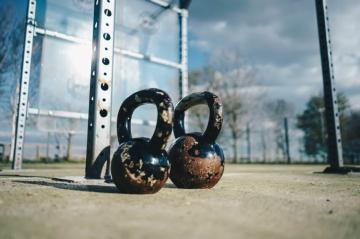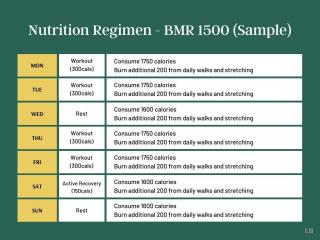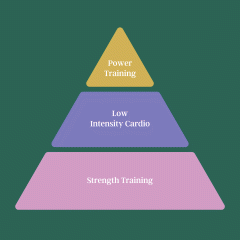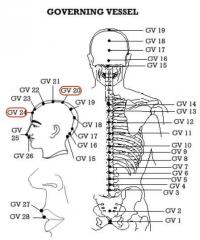So, do you want to learn how to start exercising right now?
Let me start by saying this: I am practically giddy with the idea of you sitting on the other end of this computer. You’re about to start a whole new lifestyle, and that’s no small feat. The confidence, energy, vibrancy, passion, and discipline it will bring to your life will be well worth it!
While I know you’re committed, I’m sure there are some questions you have on your mind as well, including “Where do I even begin?”
Well, because I care about your success, my answer won’t be as cut and dry as “You need to do these exercises” and such.
Creating a new lifestyle does not only mean changing your physical but also mental habits, after all. Yes, you could start working out, but that would be a disservice. You would be making things far more challenging on yourself than you need to.
There are three things that you can build on to make a change last:
Mindset
Let’s start with the foundation of your goals: mindset.
As a fitness manager, I have witnessed how a slight change in mindset has the power to change lives. You just need to:
1. Know Your Why
If you were to walk up to me in a gym and ask how to start exercising, I would stop you in your track and answer you with another question. “Why do you want to start exercising?”
I do this because behavior change is an emotional thing! Typically, it takes someone hitting rock bottom to commit to change.
For me, I was chronically ill for years. I started working out to save my life! For some, they might have gotten out of breath and have not been able to play with their kids. One client of mine saw a picture of herself that brought her to tears. She didn’t even recognize herself anymore.
These are the emotions that will propel you to your goal. You need to know why you are doing what you are doing. Just knowing what to do will never help you reach the potential you deserve.
Check out this article to start making your dreams come true: 10 Fitness Excuses You Need to Stop Making Now
2. Create SMART Goals
Now for the fun part: goal setting. This is an exciting moment. You get to dream up what you want out of your habits. What dreams and goals do you want to reach?
Merely writing a goal down will make you 42% more likely to achieve them.
But there is another professional secret I would like to share with you. It is the power of a SMART goal.
A SMART goal is a way of breaking your big goal into actionable steps to help you reach that goal!
Take the goal of someone wanting to lose weight, for instance. Turning that into a “smart” plan will look like this:
Specific: I want to lose 40 pounds of body fat.
Measurable: I want to lose 40 pounds by February 1st.
Achievable: I can safely lose 2 pounds a week by doing strength training and cardio 3x a week.
Realistic: Am I willing to commit enough time to reach this goal?
Timely: Each week, I will lose 2 pounds. Each month, I will lose 8 Pounds. By 5-6 months, I will reach my target weight.
Using this goal-setting method indeed clarifies your goal. It gives you simple action steps that will guarantee your success!
Behavioral Change and Habits
How to start exercising can be relatively simple: do it. But if it were easy, we would all be doing it, wouldn’t we?
What if I told you there was a way for you to work out naturally? You wouldn’t have to think about it — you would just wake up and do it.
It all lies in the power of the habit.
If you’ve ever read atomic habits, you understand that you will be spending tons of unnecessary energy without patterns. Once the practice becomes second nature to you, you will find the goals easier to accomplish.
Why? Because a habit “is a routine of behavior that is repeated regularly and tends to occur subconsciously.”
Think about a bad habit you’ve always wanted to break. It’s hard to stop doing that because the pattern is literally ingrained in your brain.
The same thing goes with good habits. Once a good habit is achieved, your brain will do it almost automatically.
How nice would it be to find yourself working out without even having to think about it?
There are several ways to build a habit, but these are my two favorites:
1. Habit Stacking
Habit stacking is a way of building new habits by taking advantage of existing ones.
Your brain likely has already formed hundreds of habits. E.g., brewing coffee every morning, brushing your teeth, pulling out your phone when you get stressed, or driving a particular route from work.
Instead of trying to build a whole new habit from scratch, you can just borrow from these other habits.
For instance, you change out of your work clothes each evening (I hope!). So, you could make your new habit of changing into your workout clothes instead and texting a friend your workout for the day.
This is actually how I built my love for working out in the first place. Each evening, I would place my workout clothes and gear on my bed. Then, first thing each morning, I would change into them and go for a walk or jog. Before long, mornings became a foundational habit that I later built on.
2. Make the Habit Accessible
Our brain always likes to do the easy thing. If we complicate a situation by adding unnecessary steps, it’s doubtful that we will follow through.
The simple solution is to make your habit easy. For instance, when I learned how to start exercising, I prepared for it the night. This way, it only took one step (changing) before I was ready to workout.
Now, that’s turned into me creating a gym bag, writing my workout programs in advance, or hiring someone to write my workouts for myself. I also have a specific area for tracking all my goals and progress.
Whatever you choose to do, make sure the heavy lifting is already done the day before you actually do it.
3. Commit Daily
This might seem obsessive, but it’s crucial to commit to your goals daily. If you don’t, you will likely fall out of the habit.
In my case, that means working out every morning. Sometimes my workout might not be intense. In fact, I limit my movement to recovery for at least one day and go on a hike, walk, or stretching. However, the daily consistency guarantees that I won’t fall off the bandwagon.
For most people, this isn’t something that they have to commit to for a lifetime. Still, I think everyone should do it for the first 30-90 days.
I use something called a thermometer checklist to track my consistency. It has been a game-changer!
Exercises
The final step is actually to choose what exercise to do.
My recommendation is to spend the first 30 days, just creating a habit. That could mean attending classes, going on walks, doing strength training — whatever it takes for you to gain consistency seven days a week.
Once your habits are built, there a few types of exercise you can incorporate to see positive results.
1. Cardio
Almost everyone already knows about cardio. Working in a gym, I always see the cardio equipment more flooded than anything else!
Cardio is excellent for your heart and helps you burn calories immediately. However, cardio doesn’t boost your metabolism and make you lose fat long-term (if that is your goal).
Another thing to keep in mind is that cardio isn’t beneficial unless you are either working out often or pushing yourself to raise your heart rate.
2. Strength Training
Strength training sculpts the body and allows you to burn more fat over a more extended period.
This is true for several reasons:
It reduces insulin resistance (if you are sensitive to eating carbs, that is). Muscle burns fat, so the more muscle you build, the more calories you burn daily. Recovery from strength training boosts your metabolism for the next 2-3 days.If you were to ask any fitness expert if cardio or strength training gives people better results, almost all of them would say strength training will do the job fast.
How to Do Strength Training:
If strength training works so well, then the obvious question is, “Where do I start?”
From a personal trainer standpoint, I always recommend starting with stabilization exercises. These workouts will help build up your core muscles and increase your balance so that you don’t get injured later on.
If the linked exercises above seem hard to learn, I would recommend starting with either hiring a personal trainer (my apparent preference) to guide you through everything or taking up yoga classes (which improves your stability and core moves).
Once you’ve mastered some balance and stability, then you can do other workouts as well.
Bottom Line
Best of luck on your journey! To make things easy, you need to remember the following:
Know your why Create SMART goals Make accessible habits Commit to your daily habits Spend 30 days just making a habit of moving forward Do cardio and strength trainingIf you’re struggling with the nutrition side of habit building, here are more tips for you.
More on Jumping Into the Fitness Wagon
Featured photo credit: Luis Quintero via unsplash.com





























































